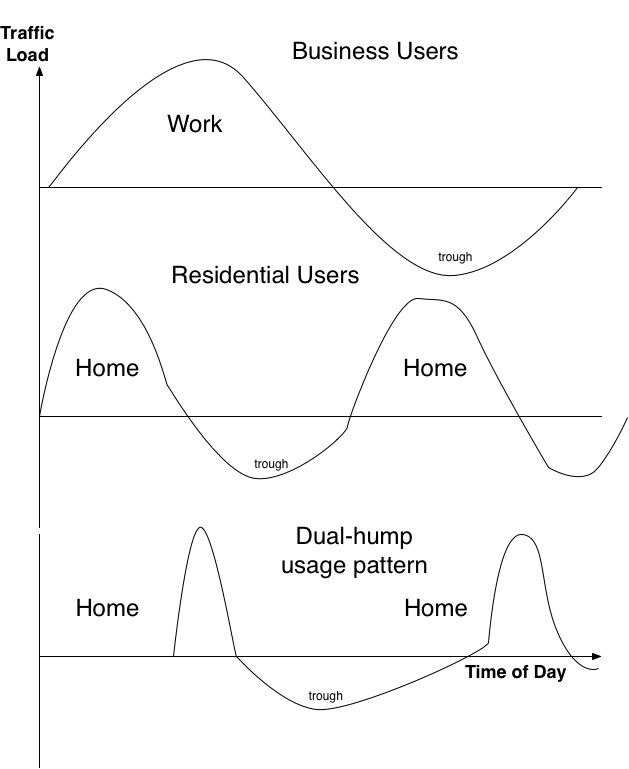Transit Tactic 9 - Internet Transit Troughs
Internet usage patterns are mostly predictable. An Internet Transit service load typically follows a sinusoidal curve if it is used primarily during working hours. Other loads exhibit a dual-hump curve because people use the service first in the morning when they wake up, and then again when they return from work in the evening. In this tactic, Internet services companies use the low points in the network load curve – the troughs.
For example, many residential access networks in the U.S. sell Internet Transit to business customers as well now (see Figure 3-9). Business customers use the network primarily during the daytime hours when the residential customers are away at work, allowing the access networks to make additional money without overloading the network during peak hours. Adding this business traffic may increase revenue while not impacting their Internet Transit expenses.
Content providers leverage these traffic patterns as well. One content provider that sells access to video content that “transcends the language barrier” said that it tends to see a dual-hump usage pattern with peaks around noon and 10 p.m. Since the provider has extended periods where the network is very lightly loaded, it is looking for clever ways to utilize its wide troughs of low usage.

Figure 3-9. Tactic 9 - Traffic shape to use the off-peak times.

